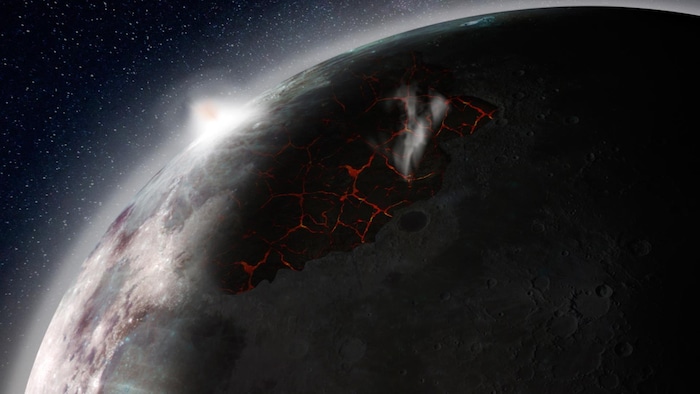Open in full screen mode An artistic representation of the Moon at the beginning of its formation. Radio-Canada Feature trial Log inCreate my account Speech synthesis, based on artificial intelligence, makes it possible to generate spoken text from written text. Analysis of lunar dust collected by Apollo 17 astronauts in 1972 shows that Earth's natural satellite was formed at least 4 years ago .46 billion years ago. This is 40 million years earlier than previously estimated.
Astronaut Harrison Schmitt, from the Apollo 17 mission, collects samples from the surface of the Moon.< /p>
In a new study published by Geochemical Perspectives Letters(New window) (in English), cosmochemist Philipp Heck of the University of Chicago and his colleagues used an atom tomographic probe, a high-resolution three-dimensional microscopy instrument, to determine the age of zircon crystals present in lunar dust.
A lunar zircon grain under the microscope.
These crystals are among the first materials to solidify during the formation of the Moon, which is believed to have originated from the giant impact of the early Earth and a celestial object probably as massive as the planet Mars.
Artistic representation of the collision between a protoplanet and Earth.
Zircon is a mineral of choice for dating work since it contains uranium. Atom-by-atom analysis allowed scientists to count the number of atoms in zircon crystals that underwent radioactive decay.
When an atom decays, it sheds protons and neutrons to transform into different elements. In the case of uranium, it transforms into lead, explains Professor Heck.
As the duration of this transformation process is well known, the researchers were able to assess the age of the sample by examining the proportion of uranium and lead atoms. This made it possible to estimate the age of the Earth's natural satellite with a precision never before achieved.
Other samples collected on the Moon will be analyzed in the coming months and could even be older than those studied during the current work.
The surface of the Moon as observed by the Galileo probe in 1992.
Knowing the moment of formation of the Moon is an important element in our understanding of the evolution of the planetary system, since the Moon stabilizes the axis of rotation of the Earth. It is also thanks to it that a day lasts 24 hours and that the oceans are governed by the tides.
Life on Earth would be very different without the Moon. It is a central element of our natural system that we want to better understand. Our study adds a tiny piece to the big picture, says Professor Heck.
In addition, the Artemis III mission, which is expected humans on the lunar surface by 2025, will be an opportunity to collect more than 25 kg of lunar rock.

